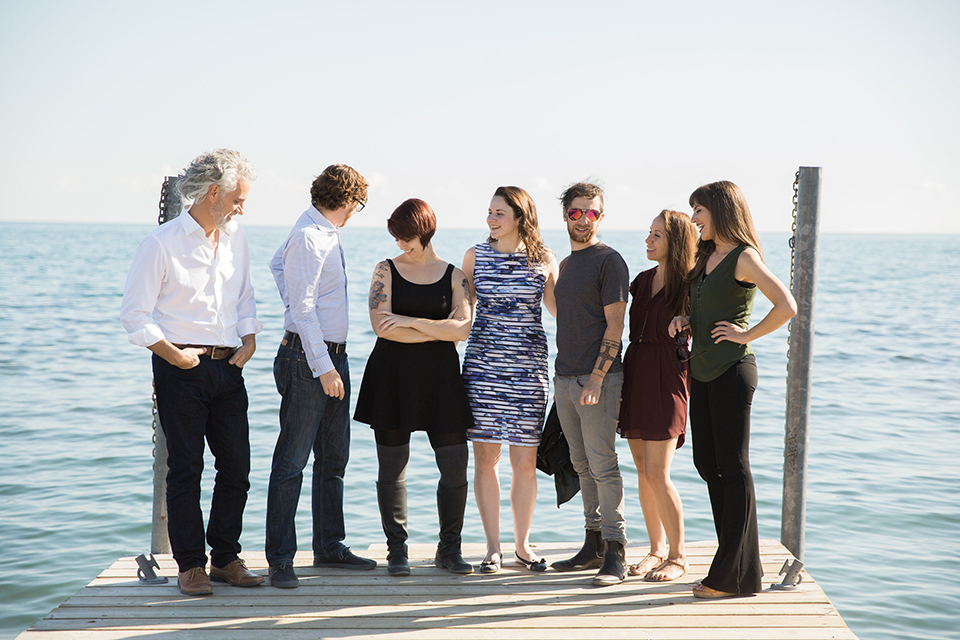The dirty little secret of corporate volunteering is that your employees are already volunteering…in their own lives, on their own time…but they’re probably not telling YOU about it. It’s unlikely you will ever identify and formally capture all those hours for your corporate employee volunteering statistics – and we’re not suggesting you try!
However, it is critical that you’re aware that those volunteers and super-volunteers exist in your midst, and we are suggesting you work to identify them, because they can help you accomplish your goals of meaningfully engaging employees through volunteerism.
This is exactly the “RealTalk” we had featuring RW’s CSO, Chris Jarvis, earlier this month (watch the full recording here) and the focus of this blog.
Before we get to the “how” of identifying this special breed of volunteer, let’s first focus on the “why”.
As we help companies build a network of employee volunteer leaders (often called ‘Ambassadors’ or ‘Champions’), there are a few fundamental frameworks we rely upon at Realized Worth to ensure these networks are both scalable and sustainable.
First up! The Journey of the Volunteer
If you’re familiar with RW, you’ve probably heard about the Journey of the Volunteer (New here? Check out this free download for more). You know that, of all the people who will volunteer in your corporate programs:
- The vast majority of them (approx. 70%) are ‘Tourists’ – typically one-time participants who don’t have a lot of experience with volunteering. They’re extrinsically motivated (probably because a friend asked them to join, or their manager encouraged them to participate so they felt they should). If tourists like the experience of volunteering and decide to participate again, they’re now intrinsically motivated to come back. They return because they choose to, not because of some outside influence.
- A smaller subset (approx. 20-25%) are ‘Travelers’ who are intrinsically motivated to participate, are now a bit more familiar with the experience of volunteering and start to feel like volunteering is just a part of who they are.
- A tiny fraction (approx. 5-10%) are ‘Guides’ – people who are fully aligned with volunteering and whose identity is inextricably linked with their role and commitment to the cause.
Next? Volunteer Network Estimate Equation
We have a variety of volunteer network governance structures we recommend to clients (Social REV members get access to these descriptions and templates), but one critical step we take no matter what the resulting structure is to estimate how many volunteer leaders companies need at each level. This is based upon a few standard equations…
Let’s say you have 100,000 employees. Taking an average volunteer rate by country (and these do vary considerably around the globe) of 25% (e.g. US/Canada), we know that among your US-based population, 25,000 of your employees are likely to volunteer.
Heading back up to our ‘Journey of the Volunteer’ percentages, we know that the following will be roughly true. Of those 25,000 employee volunteers:
- 17,500 will be “tourists” and volunteer an average of 6 hours = 105,000 hours/year
- 6,250 will be “travelers” and volunteer an average of 50 hours = 312,500 hours/year
- 1,250 will be “guides” and volunteer an average of 100-200 hours = 125,000 – 250,000 hours/year
For a company population of 100,000 people, that means that your employees are volunteering over 540,000+ hours each year…whether you know it or not, whether you’re able to record it or not, and whether they’re participating in your company-sponsored programs or not.
So, what’s a practitioner to do with this data?
Capture the attention of individuals who are out there doing this work on their own to let them know you want to invest dollars, resources, time (whatever you can offer) to support them in their volunteer experience (and maybe even encourage them to log their existing hours!).
Convert those super-volunteers (those high-level tourists and guides) into internal volunteer champions/advocates for the work your company is leading internally by acknowledging the importance of the work they’re already doing in the world and asking for their assistance in sharing their love of volunteering with others. (And don’t forget to equip them with these 8 essential skills along with video trainings from RW Social REV’s Backstage platform.)
What Not to Do: “Voluntelling” Employees to Participate
At this point, perhaps your takeaway is, “Well, if 25% of my employees are already volunteering, I should simply have leaders at my company “Voluntell” employees that they need to participate so we can get our participation numbers where they should be.”
We’d caution against this!
Why? For starters, because research shows that when you force people to do something good, you encounter a human bias called ‘Moral Licensing’ in which people then feel entitled to do something bad (e.g. stealing office supplies or treating others poorly) because “they earned it”.
What To Do Instead: Encourage Word-of-Mouth
As you’re working to find that mythical 1.25% of employee volunteers that will change everything (those are your high-level travelers and guides – those hugely passionate and intrinsically motivated individuals), here’s a tip: once you find one, ask them to help you identify other people like them – people who love volunteering. It turns out that word of mouth and personal asks go a long, long way when it comes to identifying and engaging the right people. And this is what can ultimately shift your program into overdrive and serve as the wind that powers your employee engagement sail.
This may sound like a tedious and slow process, but the good news is that similar to compound interest, your efforts to identify one individual who identifies another individual starts to build over time and you can reach critical mass if you simply stick with it! More good news: there’s no limit to this method! These individuals tend to be very influential and, with the right support and resourcing, will expand their reach and influence over time.
Don’t forget… The Importance of Framing, Individual Reflection and Transformation
One of the central tenants of RW’s work with corporate volunteering programs is the concept of creating Transformative Volunteer experiences. This means we train and empower volunteer leaders to go beyond the typical, transactional nature of volunteering (focused on tasks and logistics) to guide volunteer participants in an intentional, human-focused way that can be Transformative and create empathy.
This is helpful when we’re talking about volunteer participation rates, growth, and scalability. If you offer employees a Transformative experience, something truly unique and out of the ordinary, of course they will tell their colleagues and be more inclined to participate again. And that’s all fantastic.
For us at RW, this is ultimately how we link corporate purpose to personal meaning. It goes beyond growth and scale. It’s how we center the needs of the community. It’s how we connect with one another in a more human, authentic way. It’s how we guide volunteers and help them make sense of who they were during that experience of volunteering. And ultimately, it’s how we break down barriers between people…which is why we’re here.
Care to join us? We’d love to support you in your corporate volunteering journey, whether that’s a custom consulting engagement or providing you with the tools to do it on your own powered by the new Social REV platform, Backstage.






